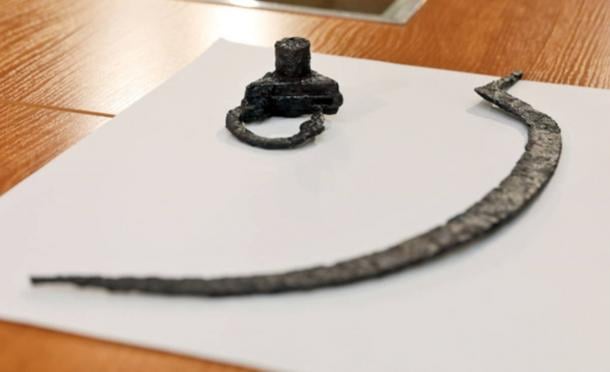🔴 Website 👉 https://u-s-news.com/
Telegram 👉 https://t.me/usnewscom_channel
In 2022, archaeologists from the Nicolaus Copernicus University in Toruń made a startling discovery in Pień, near Dąbrowa Chełmińska, Poland: the grave of a young woman buried with a sickle around her neck and a triangular padlock on her toe. This peculiar arrangement quickly earned her the moniker of the “Vampire Woman.” The burial, likely from the 17th century, featured anti-vampire elements—meant, according to some interpretations, to prevent the dead from rising.
Now, a collaboration between scientists and Swedish sculptor and archaeologist Oscar Nilsson has brought her face back to life through meticulous reconstruction, reports Nicolaus Copernicus University in Toruń.
Using a combination of 3D printing, DNA analysis, and forensic artistry, Nilsson recreated the visage of this enigmatic woman, whose life and death remain a topic of fascination and speculation.
A Combination of Ancient Practices and Modern Science
The discovery of the so-called vampire grave sparked significant interest due to its unusual contents. The sickle placed around the woman’s neck and the padlock on her toe were interpreted as protective measures.
The sickle and padlock found securing the woman’s body. (Andrzej Romański/ Nicolaus Copernicus University in Toruń)
These grave goods were not necessarily evidence of belief in vampires but rather reflected medieval customs aimed at safeguarding the living from the dead. As noted by Dr. Dariusz Poliński, who led the research, such practices may have been intended to prevent the woman’s return from the grave, possibly due to societal fears related to her health or behavior during her life.
The interdisciplinary effort to reconstruct her face involved anthropologists, medics, and forensic experts. The process began with creating a 3D model of her skull, meticulously crafted in Poland using advanced imaging technologies. Anthropologist Dr. Alicja Drozd-Lipińska contributed to the anthropological study, which served as the foundation for the reconstruction.
Dr Alicja Drozd-Lipińska from the Institute of Biology at the NCU Faculty of Biological and Veterinary Sciences with the skull of the woman found in Pień. (Andrzej Romański/ Nicolaus Copernicus University in Toruń)
The Reconstruction Process
Oscar Nilsson’s facial reconstruction process blended art and science. It involved attaching pins of varying lengths to a 3D-printed model of the woman’s skull, reflecting tissue thickness at different anatomical points. Muscles, sculpted from a special clay, were layered on the model, followed by the addition of facial features such as skin texture, pores, and potential scars. The final step involved silicone casting, complete with hair, eyelashes, and eyebrows, to produce a lifelike appearance.
The reconstructed face was unveiled on October 28, 2024, in Sweden, coinciding with the release of the documentary Field of Vampires, which explored the findings in Pień. The documentary aired in the United States the following day and is slated for release in Poland in 2025.
Dr Dariusz Poliński, Prof. NCU and Oscar Nilsson. (Andrzej Romański/ Nicolaus Copernicus University in Toruń)
A Cancer Victim, Likely Stigmatized
The anthropological and medical analyses revealed more about the woman’s life records a Science in Poland article. Notably, she suffered from a sternum hemangioma—a benign tumor that likely caused visible deformities and chronic pain. Such physical abnormalities could have contributed to the posthumous stigmatization she faced, reflected in the unusual burial rites.
Further scientific examinations, including genetic and isotopic analyses, suggested a possible Scandinavian origin for the woman, adding a layer of complexity to her story. Her remains, and others found at the site, continue to be a focus of ongoing research. Recent fieldwork, enhanced by ultraviolet lamp techniques to identify surface bone remains, indicates the potential for uncovering additional graves and artifacts.
As archaeologists prepare for further exploration in 2025, the Pień cemetery promises to reveal more about the lives and beliefs of those interred there. The ongoing study not only sheds light on burial practices of the past but also enriches our understanding of how historical societies grappled with fear and mortality.
Top image: Left; Skull and sickle of skeleton found in 2022. Right; Reconstruction of the woman’s face, by Oscar Nilsson. Source: Toruń Educational Association “Evolution”/ Nicolaus Copernicus University in Toruń
By Gary Manners



